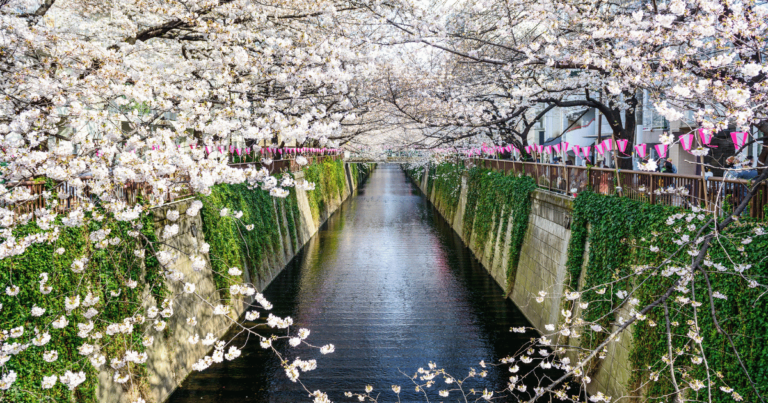Tokyo is a dazzling city that offers something unique no matter when you visit. From cherry blossoms in the spring to neon-lit winter festivities, its charm changes with the season. But pinpointing the best time to travel to Tokyo can make or break your trip, especially if you want to experience the magic this city has to offer in its full glory.
This month-by-month guide will help you choose the perfect time to plan your Tokyo adventure based on weather, major events, crowd levels, and budget-friendly tips.
Table of Contents
Understanding Tokyo’s Seasons
Tokyo experiences four distinct seasons—each with its own charm. Here’s a quick overview of what you can expect:
| Season | Months | Average Temperature (°F) | Highlights |
|---|---|---|---|
| Spring | March–May | 50–70 | Cherry blossoms, mild weather |
| Summer | June–August | 70–85+ | Festivals, fireworks, but high humidity |
| Autumn | September–November | 55–75 | Colorful foliage, comfortable temperatures |
| Winter | December–February | 35–50 | Illuminations, fewer crowds, mild snow (rare) |
Each season offers vibrant experiences, but the final decision depends on your travel goals, whether they’re viewing cherry blossoms, immersing in traditional festivals, or scoring budget-friendly deals.
Spring (March–May): The Season of Blossoms
One of the most popular—and arguably the best time to visit Tokyo—is during the spring months. Why? Two words: cherry blossoms.
Why Visit Tokyo in Spring?
- Cherry Blossoms (Sakura): Japan’s iconic sakura usually bloom in late March to early April. Spots like Ueno Park and Shinjuku Gyoen are must-visits for breathtaking views.
- Mild Weather: Comfortable temperatures make it perfect for strolling neighborhoods like Harajuku or exploring temples in Asakusa.
- Festivals: Don’t miss traditional spring events like the Sumida Park Cherry Blossom Festival.
Note: The high demand during sakura season means flights and accommodations can be expensive, so plan early.
Travel Tip
Book your spot for a hanami picnic (flower-viewing picnic) well in advance—it’s a cherished local tradition!
Summer (June–August): The Season for Festivals
If you can handle the heat, Tokyo in summer is a vibrant cultural experience filled with lively matsuri (festivals) and hanabi (fireworks).
What to Expect?
- Festivals Galore: Attend the Sumida River Fireworks or the lively neighborhood Obon dances.
- Late-night Adventures: Summer nights are perfect for enjoying the trendy rooftop bars Tokyo has to offer.
- Rainy Season (June/early July): The rainy season ushers in lush greenery, though it isn’t ideal for outdoor exploration.
While the intensity of Tokyo’s summer heat and humidity can be overwhelming, summer is undoubtedly the season for those wanting to immerse in Japanese traditions.
Travel Tip
Pack a portable fan, comfortable clothes, and stay hydrated. Beat the midday heat by exploring Tokyo’s indoor landmarks like teamLab Borderless Museum.
Autumn (September–November): The Ideal Blend of Cool Weather and Vibrant Colors
Looking for mild weather and fewer crowds? Autumn is an underrated but absolutely delightful season to visit Tokyo.
Why Choose Autumn?
- Koyo (Autumn Foliage): The trees at Rikugien Garden and Mount Takao light up in fiery reds and oranges—an unforgettable sight.
- Fewer Tourists: With vacation rush calming down, Tokyo feels less crowded.
- Comfortable Climate: Ideal for outdoor activities and scenic neighborhood walks.
From cozy evening strolls down Tokyo’s lantern-lit streets to shopping deals ahead of the holiday rush, autumn is a strong rival to spring.
Travel Tip
Mid-November is especially beautiful if you want to catch the peak of koyo season.
Winter (December–February): The Season of Illuminations
While not as celebrated as spring, Tokyo winters have their own magic—think dazzling illuminations and steaming bowls of ramen.
Highlights of Winter
- Stunning Illuminations: Streets around areas like Marunouchi and Roppongi Hills come alive with stunning light displays.
- New Year Traditions: Experience hatsumode (first shrine visit of the year) at Meiji Shrine.
- Fewer Crowds: Aside from the New Year holiday, winter is one of the least crowded times to visit Tokyo.
Though Tokyo doesn’t experience heavy snowfalls, the slightly frosty ambiance can be a refreshing change for many travelers.
Travel Tip
Don’t forget to keep your socks warm with a heated toe warmer—widely sold at convenience stores during winter!
FAQ About Traveling to Tokyo
Q1. What is the cheapest month to visit Tokyo?
Typically, January and February offer lower prices for airfare and hotels due to reduced tourist demand. Avoid traveling during New Year’s celebrations (December 31–January 3), as accommodation rates spike.
Q2. Are Tokyo’s summers really that hot?
Yes, summers can be humid and sweltering, so plan indoor activities and stay in air-conditioned spaces during peak heat times.
Q3. When is the best time to see the cherry blossoms?
Cherry blossoms in Tokyo usually start blooming in late March and peak in early April. Plan early, as this is peak tourist season.
Q4. Is autumn less crowded than spring?
Yes, autumn is generally less crowded than spring, making it ideal for those who prefer quieter streets and attractions.
Q5. Can I explore Tokyo in winter comfortably?
Absolutely! Tokyo’s winter tends to be relatively mild compared to other regions in Japan, allowing for cozy exploration.
Choosing the Best Time to travel to Tokyo
If you crave vibrant festivities and cherry blossoms, spring is your go-to. For budget-friendly travel and serene streets, winter may be calling your name. While summer wears its culture on its sleeve, autumn offers crisp countryside vibes.
No matter when you go, Tokyo promises incredible memories. One last tip? Keep your itinerary flexible to enjoy the unexpected charm Tokyo always delivers.
